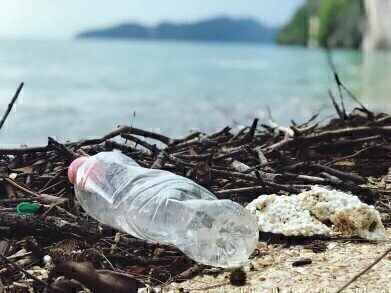Waste management
How to Speed Up Plastic Photodegradation
Aug 21 2015
Since 1950, the use of plastic has become so widespread across the globe that we now produce around 300 million tonnes of the stuff on an annual basis. When you consider that in 2013, a mere 9% of all plastics were recovered for recycling, the amount of waste plastics entering our environment is staggering.
Whilst recycling a higher percentage of our plastic waste would be most desirable, there will always be some renegade polymers which find their way into our atmosphere. As such, it’s prudent to attempt to make our plastics more biodegradable by nature itself. As things stand, the very durability which makes plastic such an attractive material is also what damages our environment by lasting for years without degradation.
Fortunately, plastic is susceptible to degradation by the sun’s rays – but unfortunately, this process can take decades or even centuries to pass. As a result, scientists have been looking for ways to make plastic and other polymers more readily biodegradable.
Integrating Additives
Plastic can be artificially manipulated to become more light-sensitive by adding certain chemicals to it during the production process. Chief among these additives (which are also known by the names photosensitisers, promoters or accelerants) are carbonyls such as carbon monoxide carbonyl and ketone carbonyl. These are essentially organic compounds interlaced with polymer molecules, helping them to ease the disintegration process.
Metal blends are also often used to kick-start a two-stage process of photodegradation. By incorporating metal salts like cobalt, iron and nickel, the polymers absorb more ultraviolet (UV) light and become significantly weaker. Then, the elements (wind, rain, etc.) work on the remaining weakened plastic structure over a concerted period of time, steadily wearing it down.
These additives have been used widely in polymers such as plastic and PVC and have been found to do a respectable job in speeding up the photodegradation process. However, there had been concerns that the overuse of additives might make the polymers unrecyclable, which would be undesirable. Because of this, European PVC industry launched a scheme called Vinyl 2010 to try and make these additives more environmentally sustainable.
Balancing Degradation with Recycling
Back in 2013, a substance known as Enzymoplast was developed by English scientists in a bid to solve this conundrum. The eco-friendly additive consists of special enzymes and natural proteins and appears to hold threefold advantages.
Firstly, the additive actually enhances the desirable properties of plastic while it is being used, especially in plastic carrier bags – i.e. its tear-proof nature and durability. Secondly, it is compatible with recycling plants which generally process traditionally-manufactured polyethylene. And finally – and most crucially – it is capable of decomposing in the Earth’s natural environment within a matter of months, leaving behind only water and carbon dioxide (CO2).
Of course, the length of time this decomposition takes will depend entirely on the amount of exposure to sunlight the waste plastic receives and its specific location – but Enzymoplast appears to be a perfect answer to how to go about speeding up the process of photodegradation.
Events
Aug 24 2025 Stockholm, Sweden and online
Aug 27 2025 Busan, South Korea
Sep 02 2025 Mexico City, Mexico
Sep 02 2025 Mexico City, Mexico
Sep 09 2025 Moscow, Russia

-from-Landia-are-on-their-way-to-Estonia.jpg)

.jpg)


-from-Landia-are-on-their-way-to-Estonia.jpg)






